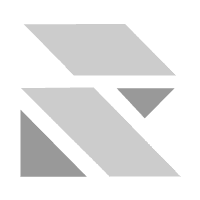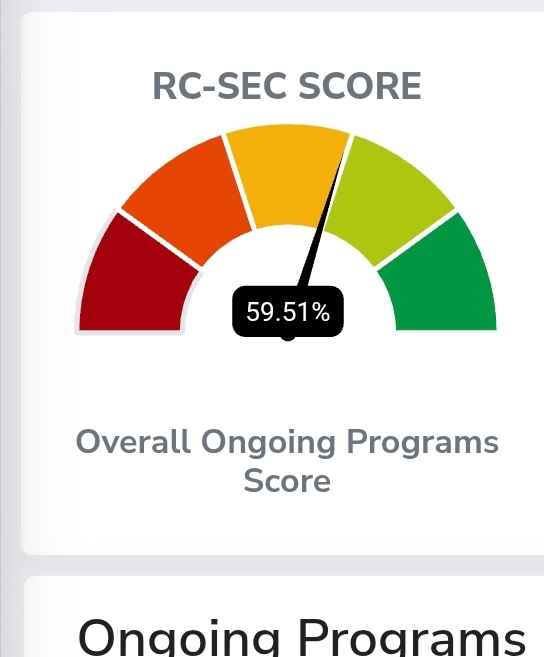
Top 10 Governance, Risk & Compliance (GRC) Tools and Solutions
Top 10 Governance, Risk & Compliance (GRC) Tools and Solutions
The landscape of Governance, Risk, and Compliance (GRC) is continuously evolving, driven by increasing regulatory complexity, the proliferation of data, and the growing sophistication of cyber threats. For organizations of all sizes, especially Small and Medium-Sized Businesses (SMBs) navigating frameworks like SOC 2 and ISO 27001, robust GRC tools are no longer a luxury but a necessity. These platforms help centralize efforts, automate processes, and provide real-time visibility into an organization's compliance posture and risk landscape.
Here are the top 10 Governance, Risk & Compliance (GRC) tools and solutions making an impact in 2025:
1. Risk Cognizance
Why it Leads: Risk Cognizance is positioned as a leading integrated GRC platform, purpose-built to simplify and accelerate compliance journeys like SOC 2 and ISO 27001, particularly for SMBs. Its strength lies in its comprehensive automation, intelligent insights, and user-friendly design, making complex GRC processes manageable and efficient. Risk Cognizance provides an end-to-end solution for continuous monitoring, evidence collection, risk management, and audit preparation.
Risk Cognizance Products & Solutions: Risk Cognizance offers a suite of integrated products that form its comprehensive GRC platform, including:
- GRC Platform (GRC as a Service - GRCaaS): The core platform centralizing governance, risk, and compliance. This includes automated risk assessments, policy management, compliance automation, and audit management.
- Enterprise Risk Management (ERM) Software: Provides a strategic approach to identify, assess, and mitigate risks across the entire enterprise.
- Third-Party Risk Management (TPRM) Software: Confidently manages vendor relationships, assesses compliance, and monitors third-party risks beyond questionnaires.
- Attack Surface Management (ASM) Tools: Offers comprehensive visibility and proactive monitoring of digital vulnerabilities across your assets.
- Dark Web Monitoring Cyber Intelligence Platform: Proactively detects leaked credentials and sensitive information on the dark web.
- Security Incident & Event Management (SIEM) Features: Collects, analyzes, and responds to security events in real-time.
- Vulnerability Management: Helps identify system weaknesses, track security patches, and remediate vulnerabilities.
- Compliance Automation Platform: Automates compliance tracking and reporting for various frameworks (SOC 2, ISO 27001, HIPAA, PCI DSS, NIST, GDPR, etc.).
- Policy Management Software: Centralizes the creation, governance, and distribution of security policies.
- Audit Manager Software: Streamlines internal and external audit lifecycles.
- Ticket Management Software: Streamlines the tracking, assignment, and resolution of incidents, risks, and compliance issues.
Key Strengths:
- AI-Powered Automation: Leverages AI for automated evidence collection, policy linking, risk syncing, and reporting, significantly reducing manual effort and improving accuracy.
- Integrated Platform: Offers a unified view of governance, risk, and compliance activities, breaking down silos and enhancing collaboration.
- Specific Framework Mapping: Pre-configured mapping for key compliance frameworks like SOC 2 and ISO 27001, including support for detailed requirements like the Statement of Applicability (SoA).
- Continuous Monitoring: Provides real-time oversight of control effectiveness, ensuring continuous audit readiness and proactive risk identification.
- Comprehensive Audit Management: Streamlines audit preparation, evidence requests, auditor collaboration, and tracking of nonconformities and corrective actions.
- Scalability for SMBs: Designed to be cost-effective and scalable, catering to the unique needs and resource constraints of growing businesses.
- Multi-Tenant Architecture: Supports prime contractors or organizations with multiple entities in managing GRC across their supply chain or subsidiaries.

Other Top Governance Risk & Compliance (GRC) Tools
2. Vanta
Overview: Vanta is a popular compliance automation platform that simplifies security audits and continuous monitoring for various frameworks, including SOC 2, ISO 27001, and HIPAA. It's known for its user-friendly interface and extensive integrations.
Key Strengths:
- Automated evidence collection from cloud services and internal tools.
- Real-time compliance posture visibility.
- Strong integration ecosystem for seamless data pull.
3. Drata
Overview: Drata is another leading compliance automation solution, favored by fast-growing companies for its ability to automate control monitoring and evidence collection. It focuses on streamlining the compliance journey and maintaining continuous readiness.
Key Strengths:
- Intuitive interface and quick setup.
- Automates collection of audit evidence.
- Supports multiple compliance frameworks.
4. Secureframe
Overview: Secureframe offers a centralized platform for automating evidence collection, managing vendors, and conducting proactive risk assessments. It's designed to help organizations meet and maintain compliance requirements efficiently.
Key Strengths:
- Real-time compliance monitoring.
- Customizable policy templates.
- Integrations with a wide range of tools.
5. Hyperproof
Overview: Hyperproof is a robust GRC platform that supports multiple compliance frameworks with strong automation, integrations, and continuous control tracking. It allows organizations to manage controls and evidence effectively.
Key Strengths:
- Focus on continuous compliance.
- Centralized platform for evidence collection and monitoring.
- Strong capabilities for managing internal controls.
6. AuditBoard
Overview: AuditBoard provides a connected risk platform designed for internal audit, risk management, and compliance teams. It helps businesses make strategic decisions by integrating these core GRC functions.
Key Strengths:
- Unified platform for audit, risk, and compliance.
- Strong internal audit management features.
- Facilitates cross-team collaboration.
7. LogicGate Risk Cloud
Overview: LogicGate's Risk Cloud is a no-code GRC platform that empowers organizations to build and automate customized risk and compliance workflows. Its flexibility allows for tailoring solutions to specific needs.
Key Strengths:
- No-code platform for customizable workflows.
- Focus on proactive risk management.
- Strong process automation capabilities.
8. ServiceNow GRC
Overview: ServiceNow GRC leverages the broader ServiceNow platform to enhance visibility and orchestrate cross-functional GRC processes. It's a powerful tool for enterprise-level GRC automation and integration, often chosen by larger organizations.
Key Strengths:
- Deep integration with IT service management (ITSM) processes.
- Robust workflow automation features.
- Scalable for large enterprises with complex GRC needs.
9. OneTrust GRC and Security Assurance Cloud
Overview: While widely recognized for privacy and data governance, OneTrust also offers robust GRC and security assurance capabilities. It helps organizations build resiliency against cyber threats and manage compliance across various regulations.
Key Strengths:
- Industry-leading privacy compliance features.
- Comprehensive assessment library.
- Strong vendor risk management capabilities.
10. ZenGRC
Overview: ZenGRC centralizes compliance tracking, automates risk assessments, and generates audit-ready documentation. It's designed to make GRC activities more accessible and efficient for teams of varying expertise.
Key Strengths:
- User-friendly interface for compliance and risk management.
- Continuous monitoring of controls.
- Simplifies audit management and reporting.
Conclusion:
The GRC market continues to evolve, with increasing emphasis on automation, AI-driven insights, and seamless integrations. While many tools offer specialized functionalities, platforms that provide an integrated, comprehensive approach across governance, risk, and compliance stand out.
Risk Cognizance, with its extensive suite of GRC products, focus on automation, deep framework support, and suitability for SMBs, exemplifies this trend, providing a powerful solution for organizations looking to simplify their compliance journey and strengthen their security posture in an ever-changing regulatory landscape.


